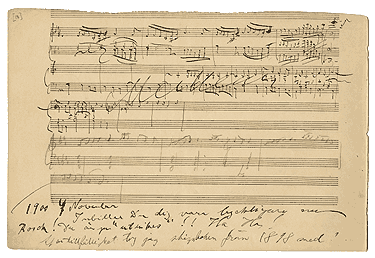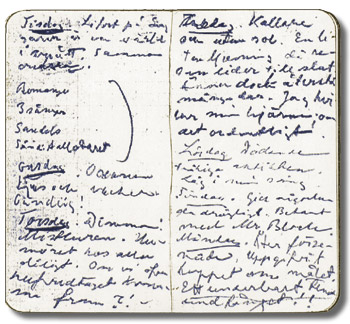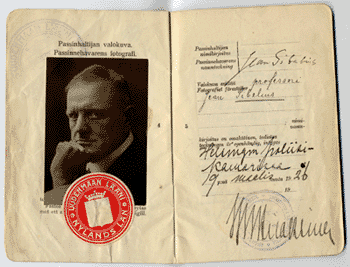The first surviving diary notes are in a sketchbook which Sibelius used during the years 1896-1900. The composer's comment on his mother is not flattering: "I visited mother. Simplicity. O simplicitas." There is also an interesting outburst by the composer at the foot of the page: 4th November 1900.

4th
November 1900. Do you think you are happier now? Rubbish! You are "abroad" !! Ha Ha ! By chance I brought along with me a sketchbook from 1898!
Sibelius was indeed "abroad", for in November 1900 the composer and his family were in Berlin on their way to Italy (see Journeys). It appears from the text that the composer had this sketchbook with him when he was working on his second symphony in Rapallo. The notebook of the Emil Gutmann concert agency also served as Sibelius's diary from July 1912 to June 1913. Matters concerning debts dominate the content, but there are also language exercises for the composer's forthcoming visit to England. They give an idea of Sibelius's command of English:
Thre baar before L
From beginning
Last mouvement
onns more
Gå onn! Go onn!
Sibelius had a small notebook with him on his journey to America in 1914. It was a very useful tool, and on its pages the composer wrote down the names and addresses of the people he met.
The notebook also served as a diary on the journey back in June 1914. Sibelius commented on his travelling companions while he was on the ship, the President Grant: "Horribly miserable faces. I stayed in bed [all day?]." This was two days before the fateful shots fired in Sarajevo

Sibelius's surviving passports naturally contain information about visas and dates, and about the crossing-points on state borders. There is also information on the composer's height. The passports generally show his height at either 176 or 177 cm. But he was "taller" when he conducted his seventh symphony in Stockholm in 1924. In March of that year the composer travelled to Sweden with a passport which was only valid for one month. Then, he recorded his height at a full 182 cm.


